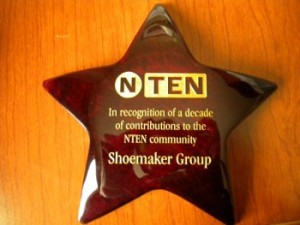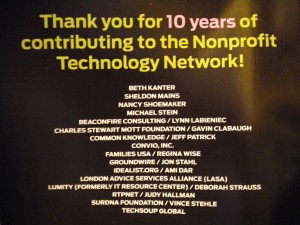AAUW’s dues year for branch members is July – June. Standard practice has been to allow new members to join branches for “half price” from Jan. 1 to Mar. 15. This has been particularly valuable in January since some benefits accrue to the branch based on the number of members they have on February 1.
While this makes sense in some cases, as a branch treasurer and former membershp vp, I’ve come around to thinking of the half-year dues program as counter productive. A new member pays dues, barely gets connected to the branch, and just starts figuring out which of the national programs are of most interest, and wham! there’s another invoice for the next fiscal year.
The Tar Heel Branch (the North Carolina Branch without Borders, serving the entire state), handles this by offering instead an 18-month membership for new members joining in January and February. The way it works is:
Assuming annual dues are $49 for national, $11 for AAUW NC and $5 for the branch ($65 total).
- We advertise a “best value” membership as $49 + 1.5x(11+5) = $49+24 = $73.
- When we get a check, we send in an at-large membership application with $49 from branch funds. [We use the FAX application and debit card to make the payment, so this is almost as easy as the online dues payment that is normally used.] The MAL expiration date will be January or February of the next year. We connect the member to the branch and start treating them as a branch member, but they don’t have access to the aauw.org member center resources or the branch roster at aauw.org.
- In a couple of weeks when the new member shows up on the national rolls, we do a transfer to a branch member, and at that time the national system changes the expiration date to June 30 of the next year. We pay the state the 16.50 they are owed (partly through the online dues system at aauw.org, and partly through a manual process).
- We’ve now got more than a year to make sure the person understands the benefits of AAUW membership before we send them another invoice.
This worked fine last year for a handful of members (before the branch signed up for online dues processing). There may be a glitch or two this year, but we expect all to go well. Over the years, I’ve submitted the “18 month option” a few times through channels, but since nothing has changed in the dues processing at AAUW, we’re handling it in this somewhat awkward way. It seems better than the alternative, though.
What about the month of March? Well, since it can take a couple of weeks for AAUW to get the new member fully processed, and dues for the next fiscal year can be paid starting April 1, it makes sense to us to just start accepting checks for the next fiscal year beginning March 1. We hold them in the branch account (with our financial report having a record in the accounts payable section) until April 1 when we can submit them for the new member. There’s some risk if we accept payment before getting final notification of the next fiscal year’s dues amount — but that’s relatively small.
While we use this for the branch without borders, it would apply for other branches as well. The main requirements are to make the new member feel welcome while the national membership is pending, and to handle the processing accurately and quickly. On the other hand, for states that do have a “branch without borders,” then if that branch understands this convoluted proceess, it could handle it for the entire state. Once someone is member of the “branch without borders” they can transfer to any other branch without paying additional dues. This can simplify recruiting new members at, say, statewide events, though your state policy may want to be more specific about how the ultimate branch’s dues are actually handled, particularly if, as in the case of AAUW NC, the branch without borders dues are kept very low.
See http://tarheel.aauwnc.org for more info on the NC branch without borders.
Comments? Questions? Post here (at change.bbvx.org) or on Facebook.


